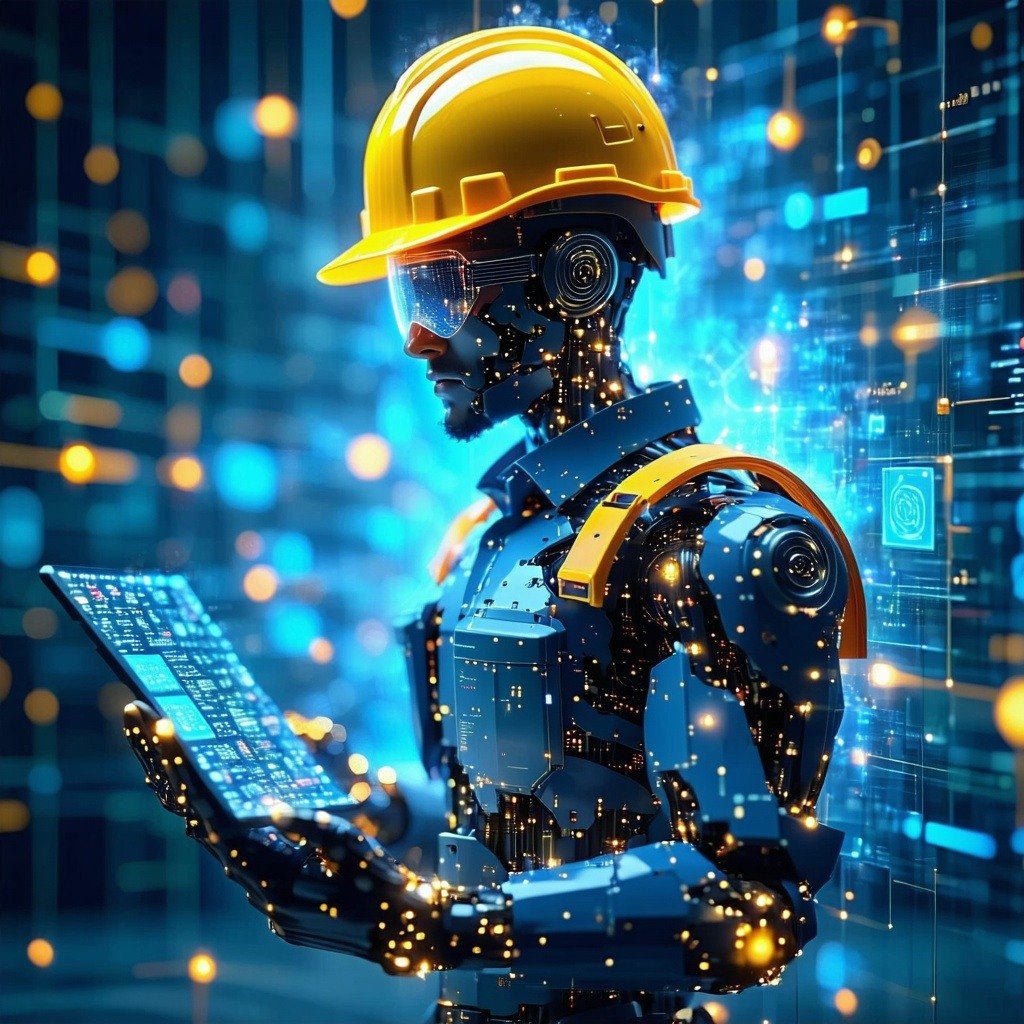The promise and peril of AI has been a hot topic the past year. Every conference I attend or magazine I receive is focused on AI. They are promoting the cost savings and transformational effects it will have on our business. We can have bots perform administrative tasks, analyze data and do so much more. The robot construction worker still seems to be off in the distant future. However, that distant future is getting closer and closer.
Fortunately, a majority of our work requires people. In my lifetime, I don’t foresee AI replicating the work our excellent carpenters perform in the field. I don’t see it offering the perspective of 30 years of project experience our Director of Field Operations provides – and his motivating delivery. Our project managers can encompass several perspectives when analyzing a project status to deliver the best possible outcome. I have yet to see AI offer an equal project analysis.
Perhaps I am expecting too much from the AI promises promoted in these speeches and publications. However, if there is a way to drive client value then I’m all in. When it entered the mainstream, AI seemed to be geared towards large corporations with the complexity and volume of projects that surpass ours. Increasingly though, there have been tools generated to assist us in delivering tangible benefits, ranging from faster project completion to enhanced quality and cost savings.
In construction, where every day of delay can mean thousands in lost revenue, timely project completion is critical. AI-driven scheduling tools analyze vast datasets—including weather forecasts, supply chain logistics, and labor availability—to predict and mitigate potential delays. By streamlining workflows and optimizing project sequencing, AI helps ensure that construction stays on or ahead of schedule —all translating into a quicker return on investment.
We are exploring ways to use AI-powered cost estimation tools to analyze historical data, current market trends, and supplier pricing to create highly accurate and transparent budgets. Predictive analytics can even account for potential cost fluctuations, allowing for proactive planning.
Some AI tools are already embedded in the project management software we currently utilize. This software utilizes AI to streamline communication by offering real-time project dashboards. Clients can log in to view progress updates, budget tracking, and timelines—all from their phone or computer. AI algorithms can also send automatic alerts for key milestones or potential issues, keeping everyone on the same page.
We see the greatest value in AI in the streamlining of basic administrative function, allowing our employees to focus on more complex and strategic initiatives. One of the primary applications of AI in administration is data management. AI-powered systems can quickly process, sort, and organize large volumes of data, ensuring accuracy and consistency. For example, tasks such as data entry, document filing, and record-keeping can be automated. By automating repetitive tasks and enhancing decision-making processes, AI not only accelerates administrative functions but also contributes to increased productivity, cost savings, and improved organizational efficiency.
AI tools offer immense potential for efficiency, cost savings, and risk mitigation in the construction industry. However, their adoption comes with notable challenges and risks. While AI enhances productivity, it may reduce the need for certain roles, leading to workforce resistance. Upskilling employees to work alongside AI is crucial to avoid operational disruptions. Additionally, AI can streamline project planning, risk assessment, and supply chain logistics, but over-reliance without human oversight can be dangerous. Construction projects involve unpredictable elements—weather, labor issues, regulatory changes—that AI may not fully account for. So far human oversight is still required to maximize the effectiveness of AI tools. Fundamentally, if the tools are not delivering positive client outcomes, they are not worth using.
Ultimately, for clients the integration of AI into the construction process isn’t just about cutting-edge technology—it’s about results. Projects finish faster, stay on budget, meet higher quality standards, and offer greater transparency throughout the process. In the competitive industries in which we build, these advantages can make a significant difference in a business’s bottom line. It’s a game-changer for companies that want to offer clients more efficient, transparent, and high-quality projects.
We are in the early stages of implementing AI tools to assist our teams in gathering data, brainstorming, or presenting information. However, like any tool it much be checked for accuracy and reliability. It must also be used for the right task. For us, it is an evolving process. For clients, the goal is less stress, fewer surprises, and ultimately, a smoother path to a successful construction project.












